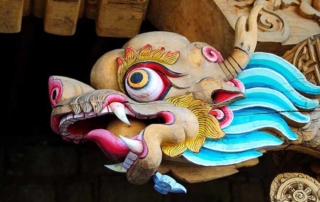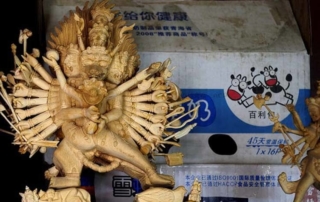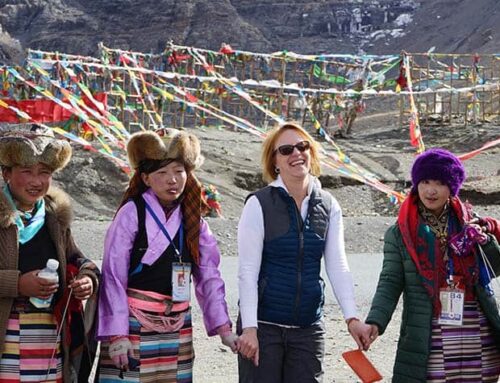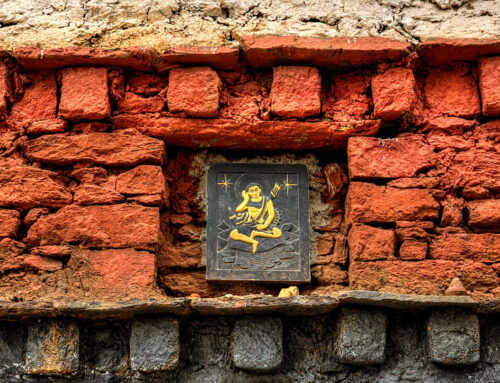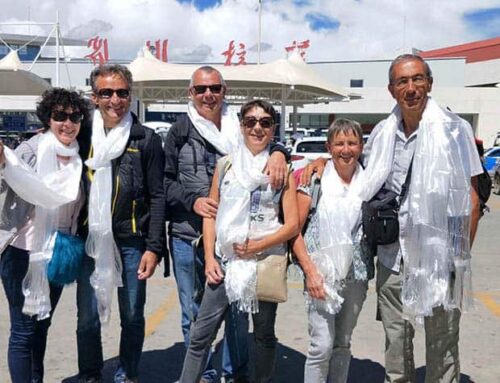Tibetan Wood Carving tradition dates back to the seventh century. During that time, our King Songtsen Gampo married the Nepalese Princess Bhrikuti and Princess Wencheng of the Tang Empire. Both princesses brought holy statues from Nepal and Tang China for the marriage. Upon their arrival in Lhasa, the Temple had to be built to house those statues.
Artisans from Tang and Nepal were invite to help build two temples in Lhasa, Jokhang, and Ramoche. The skills of the invite artisans were later transferred to the local Tibetans. The seventh century began with all Tibetan arts and crafts, including wood carving.
When you are in Tibet
Tibetan Wood Carving tradition dates back to the seventh century. It was during the seventh century that our King Songtsen Gampo married the Nepalese Princess Bhrikuti of Nepal and Princess Wencheng of the Tang Empire. For the marriage, both princesses brought holy statues from Nepal and Tang China. Upon the arrival in Lhasa, the Temple was to be built to house those statues. Artisans from Tang and Nepal were invited to help build two temples in Lhasa: the Jokhang and the Ramoche. Skills from the invited artisans are later transferred to the local Tibetans. That is why the seventh century is considered the beginning of all Tibetan arts and crafts, including wood carving.
Tibetan Wood Carving in the past
When you travel to Tibet, you can find Tibetan woodcarving works in the crossbeams of houses, windows, doors, and furniture. As with other Tibetan art forms, iconic motifs are frequently employed in Tibetan woodcarving. Mountains, flowers, clouds, and other natural elements, as well as religious symbols, are used. All these iconic motifs must follow a standard layout. The artist must master a vast repertoire of designs and themes to become an expert carver.
The most common symbols to be carved are those of religious art, including the Tashi Targye, the eight auspicious symbols. Which has an enormous spiritual significance? These motifs are the first designs that students learn to create.
In the past, woodcarvers in Tibet also worked as carpenters, architects, and engineers. They would construct the beams of a building and other essential parts of the structure. They must master the intricate fashioning of joints to support the weight of a structure. Even furniture is created with carved panels assembled to form whole pieces using indigenous methods. The entire work of Tibetan woodwork would assemble without any hinges or nails.
The process of Tibetan Wood Carving
The design images are transferred to the flat surface of the wood. A Tibetan bamboo fret saw is used for cutting out the holes in the images, while chisels are used to carve the design on the front and back, as well as to create depth.
The training in Tibetan woodcarving
Initially, in practice for the wood carving, the student would focus on learning to draw the traditional design. They would be taught to make their own set of chisels and learn how to use them. The student would learn to create smaller pieces of work on softer wood before progressing to more complex art on more challenging wood. Additionally, they must master the fundamental carpentry techniques of cutting and joining wood pieces. At the end of their training, trainees learned the basic design and construction of elaborately carved thrones and cabinets that adorn the shrine rooms and Altars of great homes and Monasteries.
Read more about Tibet Travel Information and Tibet Tours. Please visit our blog: Nomadictibet.com.

Tenzin Travel is one of Tibet’s most experienced tour operators, with over 20 years in the industry. Founded by a local Tibetan family with decades of expertise as guides, managers, and route planners, we craft personalized itineraries for every traveler.
Our Lhasa office is just steps from Barkhor Square, and our all-Tibetan team ensures deep cultural, linguistic, and religious insights, setting us apart from other agencies.
Beyond tourism, we support Tibetan communities by donating a portion of each tour to local projects. Your travel to Tibet is about more than profit—it’s about opportunity for us to give back.



